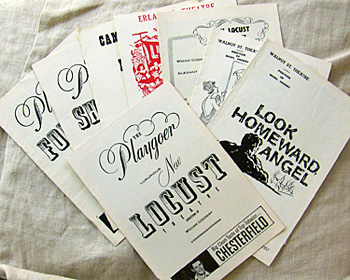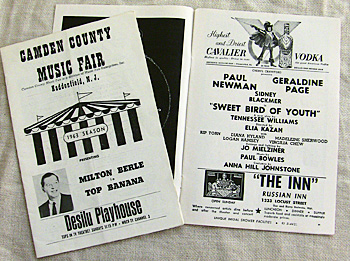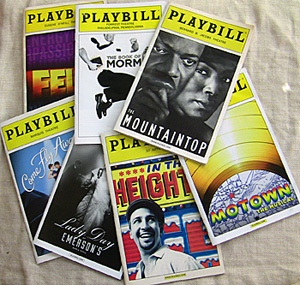A few weeks ago, I took a bus trip to New York to see James Earl Jones play a crotchety elderly man and Cicely Tyson an enduring woman in the Broadway production of “The Gin Game.” Both were playing close to their ages – him 84 and she years younger than her 90 – in a play that has opened several times on Broadway, the first in 1977 with the husband-wife team of Hume Cronyn and Jessica Tandy.
I went with a local church group, organized by a friend who uses the trip as a fundraiser for scholarships for young church members. Over the years, a busload of us – and sometimes a car or two – have driven to New York, had lunch at Virgil’s or Dinosaur barbecue or some other place she had scoped out and reserved, and then settled back to enjoy a Broadway show.
The shows have been both plays and musicals, and all have been very much worth the trip. My friend never asks if I’m going to join them; she just orders a ticket for me. The shows have a particular theme: either related to African American history or performed by African American actors. The trips are more than entertainment; they are also educational.

Sometimes, several of my friends and I take the drive to New York to see Broadway and Off-Broadway shows on our own (we saw “In the Heights” before it opened on Broadway). I’ve written about some of them and have Playbills for many, along with Denzel Washington in “Fences.” His co-stars in the play signed Playbills for us when we all ended up at the same sandwich shop, and I have his signature on a copy of a “Julius Caesar (2005)” Playbill somewhere among my papers.
I was tossing out some old papers and bills recently when I came across nearly three dozen Playbills, along with a program for a local high-school musical (“Seussical”) and a 1947 Theater Arts magazine with mention of an upcoming play by an African American playwright named Theodore Ward.
Every now and then, Playbills turn up at auction, and I managed to bring home a few Playbill-like programs from the 1950s and 1960s for local theaters. There were about two dozens of them; several were titled The Playgoer, and their content included characters and scenes, restaurant and other business ads, bios on the cast, upcoming productions and more. One even had a story about playing bridge.

Looking over these programs got me to thinking about what they told me about the tastes of the owner. This was obviously a person who supported local theater in Philadelphia and the surrounding area. The programs were for theaters that no long exist – New Locust Theater – others that have been transformed – Shubert, now the Merriam – and those still hanging in there – Walnut Street Theater and Forrest Theater.
Several programs featured performances at the Camden County Music Fair in Haddonfield, NJ, where “Mister Television” Milton Berle took to the stage in 1963 in “Top Banana” on the summer theater circuit.
There were also single sheets for the Erlanger Theater in Philadelphia. One sheet promoted a musical comedy “Li’l Abner,” based on cartoonist Al Capp’s newspaper characters. The highest ticket price was $6 on Friday and Saturday nights.

Some of the performers had familiar names: Paul Newman and Geraldine Page in Tennessee Williams’ “Sweet Bird of Youth”; Ben Gazzara in “The Night Circus”; Anthony Perkins in Thomas Wolfe’s “Look Homeward, Angel”; Roddy McDowall in “Handful of Fire”; Robert Preston in “The Music Man”; Ethel Merman in “Gypsy,” and William Shatner in “The World of Suzie Wong.”
This theater-goer watched as young actors Paul Newman and Geraldine Page (both 34 at the time) took to the stage before a local audience in February 1959 on their way to a Broadway opening the next month. In 1962 they would recreate their roles on the movie screen.
The Playgoers came nearly 75 years after the more-familiar Playbill, which started in 1884 for one theater. Playgoers was distributed by the Playgoers Club, which offered subscriptions for plays at the Erlanger and New Locust Theaters. It was founded by Alexander H. Cohen, a theater and television producer who managed both theaters.

My batch also included Playgoers for the Forrest. One program contained two pages soliciting charter membership in the Playgoers Club for $10 a year. An ad for 1958 Fords noted the date.
At auction, those old Playbills appear from time to time, but I’m sure they don’t pull in much money. They are too personal unless, I suspect, they include the name or autograph of someone famous (Will someone pay big bucks for a Denzel signature? Probably not, since there was a long line of us waiting to touch and see him).
I love Audra McDonald, so I have her “being” Billie Holiday in “Lady Day at Emerson’s Bar and Grill“; “Fela” and its abounding energy; “Motown” and its iconic music; “The Mountaintop,” about Dr. Martin Luther King Jr.’s last night alive in Memphis in 1968; “The Book of Mormon”; “Kinky Boots,” loved the movie; “Come Fly Away,” featuring the music of Frank Sinatra; “By the Way, Meet Vera Stark,” which introduced me to a little-known black actress named Theresa Harris.
The question is: Will anyone want my Playbills and their corresponding message?
